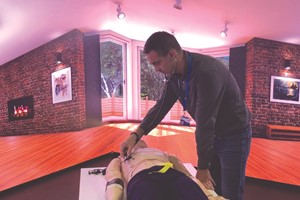In a breakthrough development, researchers have introduced a novel method for triggering and imaging seizures in epilepsy patients, presenting a significant advancement in tailoring epilepsy surgery. Published in the March issue of The Journal of Nuclear Medicine, this pioneering approach promises real-time data collection, which could revolutionize the field by enhancing surgical precision and patient outcomes.
Conventionally, physicians in neurology and nuclear medicine faced the challenge of waiting for hours, or even days, in hopes of capturing the onset of a seizure. This new method not only eliminates the lengthy waiting period but also optimizes resource utilization, making it a convenient and clinically feasible alternative.
"People with epilepsy who do not respond to medication often turn to brain surgery for relief. The success of these surgical interventions hinges on accurately identifying epileptic brain tissue while preserving healthy tissue," explained Sabry L. Barlatey, MD, PhD, a resident in the Department of Neurosurgery at University Hospital of Bern in Switzerland. "Precise delineation of epileptic brain tissue is crucial for successful surgeries, and obtaining timely images of seizures may significantly enhance surgical planning."
The method, known as ictal single-photon emission computed tomography (SPECT), has been utilized since the 1990s as the sole neuroimaging technique capable of capturing epileptic seizure propagation in the brain. However, due to escalating costs and time constraints in healthcare settings, many epilepsy centers had discontinued its use.
The case study involved three adult participants with left temporal epilepsy. Researchers employed stereotactic electroencephalography (sEEG) leads in targeted cerebral areas to trigger patient-typical seizures. Subsequently, the radiotracer 99mTc-HMPAO was administered within 12 seconds of seizure onset, and SPECT images were acquired within 40 minutes.
Remarkably, seizures were successfully triggered in all participants, replicating patient-typical seizure characteristics and electrographic patterns on sEEG without any adverse events. Each triggered seizure exhibited patient-specific features, with unique early seizure propagation patterns captured in the images.
"The practical implications of this study are profound, as it simplifies the acquisition of ictal SPECT," remarked Thomas Pyka, MD, Privatdozent in the Department of Nuclear Medicine at the University Hospital of Bern. "This advancement may lead to higher-quality images and could refine resection planning, ultimately improving seizure control and cognitive outcomes in epilepsy surgery."
This innovative method not only streamlines the imaging process but also provides invaluable insights into seizure propagation, offering neurosurgeons a powerful tool to optimize surgical strategies tailored to individual patients. As research in this area progresses, it holds the potential to significantly enhance the effectiveness and safety of epilepsy surgeries, benefiting countless individuals worldwide.













